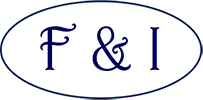Annual Course Dressage Report
Contact
The underlying theme that seemed to come across from both the dressage and jumping sessions was that the horses had to be working to the contact in order to create enough power. However, this still meant that the horses had to be in-front of the leg in order to be to the contact.
During Adam’s sessions it was an absolute breath of fresh air that he talked about whether a horse should work deep or whether it should work up. There is a great sense in the horse community that we cannot be seen to be working a horse deeply without running the risk of being accused of rollkur/hyperflexion.
In the training sessions the horses had to work in a position that allowed them to bring their backs up to get them swinging through their backs. There was no greater example of this necessity to work deep than with Becky Monk’s 16hh Gelderlander, Arendo.
While assessing Becky’s horse in halt Adam could see that his natural posture was to stand with his hind legs out behind, extended through the back and high in the neck. If this horse didn’t work deep in the frame then he would never actually develop the back muscles and engagement from behind to give him the necessary degree of collection to balance himself without dropping his back.
I must stress however that Adam did not get Arendo to work deep throughout the session, he used that work to get the connection from the hind quarters to the bridle to get the contact better which in turn got the horse to work uphill and over the back.
At the points that this horse lost the softness over the back Adam would work with Becky to get Arendo deeper over the back and thus more truly into the contact once again to get the horse to work back up to the bridle.
Adam’s analysis of this thought process is that if we go to the gym, we don’t just use one piece of equipment. We would go around using different pieces to work different parts of our bodies. Therefore, we should do the same with our horses use different postures for the horse to work all the parts of the body required to carry out the tasks that the horse must complete.
Also coming through in this training ethos of Adam’s was that the rider must get the reaction required for the level that the horse is working at. For myself, riding my own Rastafari, Adam expected me to get Grand Prix reactions from both the legs and the half halts.
With these improved reactions it allowed the horse to have more Grand Prix paces and balance.
I came into the session really wanting to work on the Grand Prix canter zig zag. In tests so far, this movement has been a real issue for me to create the correct balance. After work from Adam to get better reactions and put Rasta into a correct collected canter balance for the movement, we were then sent to ride the dreaded zig zag. The balance felt so good, 3 strides left, change, 6 strides right, change, 6 strides left, change, 6 strides right, change and then 3 strides left and change at G.
Adam’s next comment “what was wrong with that then?” For the first time I didn’t make a mistake and it felt so easy, just because I had put the correct balance into the movement. I was thrilled!
Another excellent tip to come from my sessions which will be really useful while training all horses up the levels was while warming up for the Grand Prix work Adam had me ride a Grand Prix balance but to start with, ride an advanced medium line in the canter half passes and as the horse’s suppleness improved, I could then change the line to a more difficult and testing line.
I look forward over the next twelve months to working on the areas that Adam highlighted and hope and intend to show an improvement in the Grand Prix work at next year’s annual trip to Addington.
Report by Mark Cunliffe BHSI
